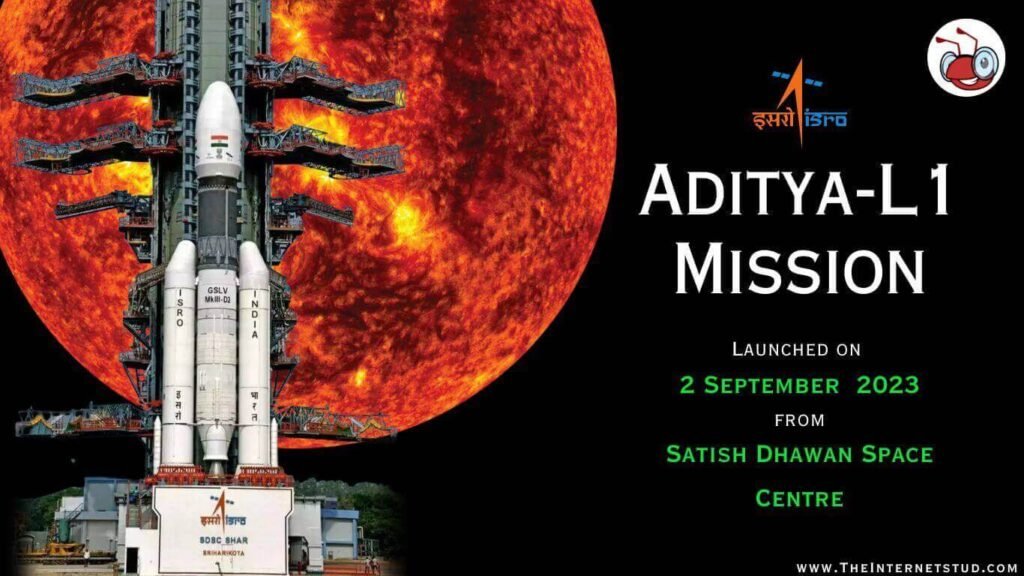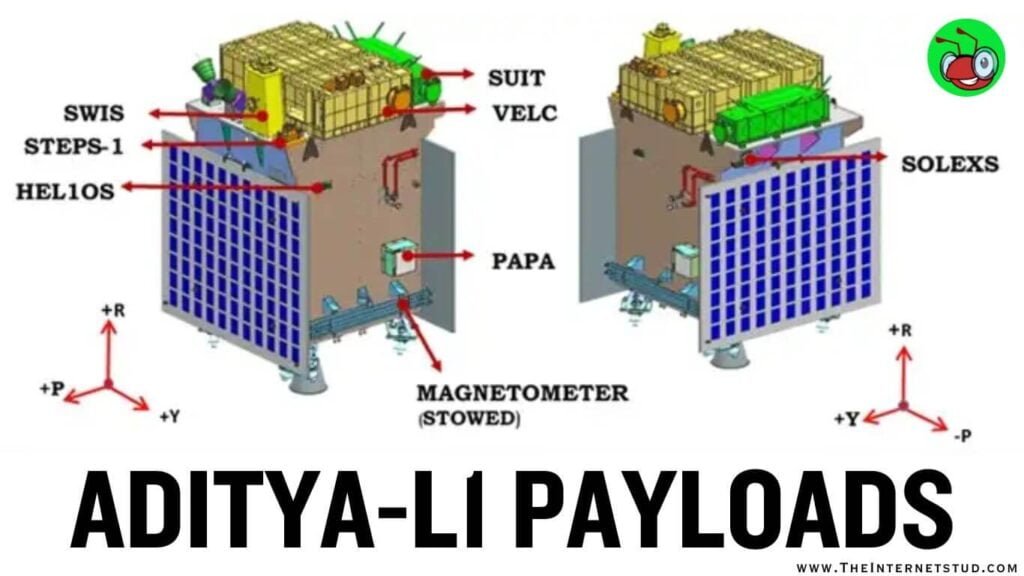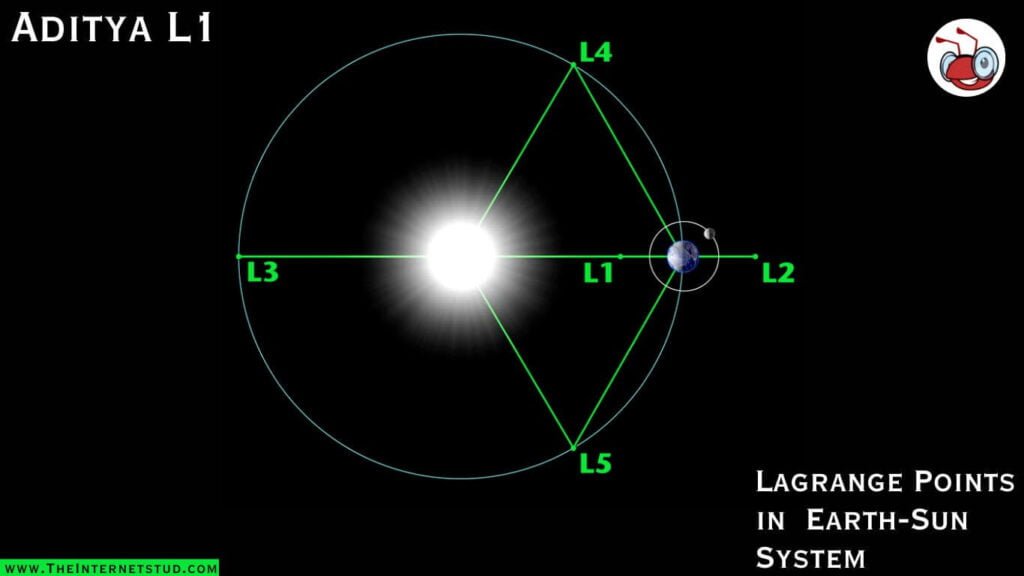India is not going to stop now in the journey to explore space and this has been proved by the Indian Space Research Organization in recent times. India has become the first ever country to attempt a soft landing on the South Pole of the Moon. After the Moon, the next mission is to keep an eye on the Sun. In this write-up, I am going to explain to you about the Aditya L1 Mission that was launched by India to study the Sun in the simplest language so that you can understand the meaning of ISRO’s First Solar Space Mission.
Table of Contents
There is a lot to know about the Aditya L1 Mission including its objectives, the payloads attached to the spacecraft, etc that is I am going to explain to you along with the whole Aditya L1 Mission planning. So let’s get started.
What is Aditya L1 Mission?
Aditya L1 Mission is India’s first Solar Space Mission that aims to focus and observe the activities of the Sun by situating in the Halo orbit of the L1 point. The Aditya L1 spacecraft will study the specific layers of the Sun that is the photosphere, chromosphere, and Corona which is the outermost layer of the Sun. To accomplish the mission objectives, there have been 7 Payloads attached with the Aditya L1 Spacecraft, I have given complete information ahead regarding the names and functioning of all 7 payloads.

If we consider the Aditya L1 launch date and time, then India’s first Solar Space mission was successfully launched on 2 September 2023 at 11:50 AM as per Indian Standard Time from the Satish Dhawan Space Centre, Sriharikota, Andhra Pradesh. Polar Satellite Launch Vehicle or PSLV Rocket has been used to launch the Aditya L1 Mission.
Aditya L1 will take nearly 4 months to reach the L1 point that is planned for the spacecraft to orbit in and keep an eye on the Sun. Aditya’s L1 launch date is 2 September 2023 while the expected date to reach the L1 point is 12 January 2024.
Aditya L1 Distance From Earth & Sun
As I have just told you that it will take nearly 4 months to reach the Aditya L1 Spacecraft to the L1 point, you must have thought about how far is this distance. So the L1 point is 1.5 Million Kilometers away from the Earth while 148.5 Million Kilometers from the Sun. So when the spacecraft successfully achieves its position in space at the Halo orbit in the L1 point, Aditya L1 distance from the Earth will be 1.5 Million Kilometers while Aditya L1 distance from the Sun will be 148.5 Million Kilometers.
Aditya L1 Objectives
Aditya L1 Mission has been planned especially for the study of the Sun and its activities. As of now, we only know that there are nuclear fusion reactions are happening in the core of the Sun that produces heat and energy but apart from that there are so many things to discover and predict about the only energy source of our Solar System. And thus India has launched its Solar Space Mission with some crucial objectives. So here I am sharing some main Aditya L1 Objectives so that you can learn why this mission is so important for humanity.
- Study of Solar upper atmospheric (chromosphere and corona) dynamics.
- Study of chromospheric and coronal heating, physics of the partially ionized plasma, initiation of the coronal mass ejections, and flares
- Observe the in-situ particle and plasma environment providing data for the study of particle dynamics from the Sun.
- Physics of solar corona and its heating mechanism.
- Diagnostics of the coronal and coronal loops plasma: Temperature, velocity and density.
- Development, dynamics, and origin of CMEs.
- Identify the sequence of processes that occur at multiple layers (chromosphere, base, and extended corona) which eventually leads to solar eruptive events.
- Magnetic field topology and magnetic field measurements in the solar corona.
- Drivers for space weather (origin, composition, and dynamics of solar wind.
These are some scientific Aditya L1 Objectives those accomplishments will be very helpful in understanding the behavior of the Sun.
Must Read: James Webb Space Telescope – World’s Most Powerful Space Telescope
Aditya L1 Payloads
Payloads refer to the instruments that are attached to the main body of the Spacecraft that will be used to observe, measure, and conclude the data collected from the target celestial body. Aditya L1 has 7 Payloads attached to the Spacecraft or the Solar Observatory out of which 4 are Remote Sensing Payloads while 3 are In-Situ Payloads. Here I am sharing the Aditya L1 Payloads names and their functions.

In case you don’t know the meaning of Remote Sensing and In-Situ, let me explain to you. Remote Sensing Payloads are those instruments that will make measurements about the Sun from a distance without any physical contact while In-Situ Payloads are those instruments that will take measurements by physical contact with the object.
- Visible Emission Line Coronagraph (VELC) – VELC is a Remote Sensing Payload that will be used in keeping an eye on the outermost layer of the Sun that is Corona. This payload has the capability of imaging and spectroscopy of the Corona Layer.
- Solar Ultraviolet Imaging Telescope (SUIT) – SUIT has been designed to observe and study the Ultraviolet emissions from the Photosphere and Chromosphere. It will also capture high-resolution images of the atmosphere of the Sun.
- Solar Low Energy X-ray Spectrometer (SoLEXS) – SoLEXS is designed to study the Soft X-rays emitted from the Sun’s atmosphere. The study of Solar Flares and Coronal Mass ejections will also be part of the work of this Payload.
- High Energy L1 Orbiting X-ray Spectrometer (HEL1OS) – HEL1OS will help to study and collect data for Hard X-rays emitted from the Sun’s atmosphere, Solar Flares, and Coronal Mass Ejections.
- Aditya Solar Wind Particle Experiment (ASPEX) – ASPEX is an In-Situ Payload that is designed to study the protons and heavy ions released from the Sun during Solar winds. This instrument will come in direct or physical contact with the particles, hence is referred to as an In-Situ Payload.
- Plasma Analyser Package For Aditya (PAPA) – PAPA is designed to study the protons and heavy ions released from the Sun and present in the Solar winds.
- Advanced Tri-axial High-Resolution Digital Magnetometers – This Payload is designed to detect and calculate the strength and magnetic field of the Sun in three-axis – Bx, By, and Bz.
These are the total 7 Aditya L1 Payloads, the initial 4 are Remote Sensing while the last 3 are In-Situ payloads. A common question that arises in everyone’s mind is that if we are observing the Sun from a distance of 148.5 Million Kilometers then why we could not do it from the Earth?
Its simple reason is that our Earth protects us from all harmful radiations coming from the Sun including UV rays, X-rays, Gamma rays, Infrared rays, and many more, thus we can not make any data about these radiations while sitting on the Earth. Therefore, to get correct and complete information about the Sun, it is very important to get out of the Earth.
Another question that everyone is looking for a correct answer to is why ISRO has chosen the L1 point for the Aditya L1 Mission. L1 point is a place between Earth and Sun that is considered the most stable place because here, the Gravity of the Earth cancels out the gravity of the Sun. it will take less effort for any spacecraft to be situated at this point. Our Aditya L1 will be placed at this point in a Halo orbit and the most interesting part is that the Sun will not be able to hide from the Aditya L1 even for a moment on the pretext of eclipse or occultation.
What Is L1 Point?
Everyone is just seeking to know what is this L1 Point and why it has been chosen for the Aditya L1 Mission. So here I am to give you the right answer. Actually, L1 Point is an empty point in Space that is 1.5 Million Kilometers away from the Earth and at this point, the gravity of the Earth and the Sun cancel out each other thus L1 Point is considered the most stable place to study and observe the Sun.

Secondly, Aditya L1 will be able to observe the Sun every time as there will be no issue of occultation or eclipses, so the Sun cannot hide at any time. There are more points like this in Space – L2, L3, L4, etc., and the World’s Most Powerful Space Telescope of NASA – James Webb Space Telescope is situated at the L2 Point or Lagrange Point 2.
Read Also: Scientist Nambi Narayanan Life Story – From Controversy to Padma Awards
Aditya L1 Budget
Aditya L1 Mission was successfully launched on 2nd September 2023 at 11:50 am and it is expected to reach the L1 point on 12 January 2024 after 4 months by traveling a distance of 1.5 Million Kilometers. India is known as a makeshift and thus could make such vast missions at cheap prices. India’s recent Moon Mission Chandrayaan 3 cost just Rs 615 Crore while the Aditya L1 Budget also just Rs 400 Crore including the launch.
Read Also: Chandrayaan 3 Mission – Launch Date, Budget, & Everything You Need Know
Interesting Facts About Aditya L1
In this write-up, I have tried my best to provide you with all the crucial details about the India Maiden Sun Mission in the simplest language so that you can understand what is exactly going on. And it is my duty to also share those facts about Aditya L1 that you have the right to know. So here I am sharing some interesting and lesser-known facts about Aditya L1 below.
- Aditya L1 speed per hour is 500km/h.
- With this speed, it will take 125 Days to reach the spacecraft to the L1 point.
- Aditya L1 will orbit in a Halo orbit in the L1 point.
- Solar and Heliospheric Observatory Satellite, or SOHO is a spacecraft that was launched by the European Space Agency and NASA on 2 December 1995 is already present at the L1 point and observing the Sun.
- High Strength Alloy Steel is used as the primary metal in the making of Aditya L1 Spacecraft.
- Aditya L1 will observe the Sun for a period of around 5 years by staying at the L1 point.
- Aditya L1 name is given to the spacecraft because Aditya means Sun in the Sanskrit Language and L1 refers to the Lagrange Point where the spacecraft will be situated.
Must Read: Pixxel Founder Awais Ahmed’s Story To Build A Satellite Company At The Age of 25.
Final Words
Through this write-up, my main objective was to explain to you every possible detail about the Aditya L1 Mission including Aditya L1 Objectives, Aditya L1 budget, Aditya L1 Payloads, Aditya L1 facts, etc. so that your craving can end regarding this mission. We pray that just like Chandrayaan 3, ISRO may also succeed in the Aditya L1 Mission and make many important discoveries related to the Sun which no one has been able to discover till now.
Hope this write-up was helpful and informative enough for you. Thanks for reading.
FAQs
What is L1 in Aditya Mission?
L1 refers to an empty place in space that is situated 1.5 Million Kilometers away from the Earth and 148.5 Million Kilometers away from the Sun. This L1 point between Earth and Sun is a place where Earth’s and Sun’s gravity come in an equilibrium and thus there is no gravitational force faced by any object. Here L stands for Lagrange and there 5 such Lagrange points lie in the Sun-Earth system.
When was Aditya-L1 launched?
Aditya L1 launch date was 2nd September 2023 and its expected arrival date to the L1 point is 12 January 2024.
How Aditya-L1 will land on the Sun?
Aditya L1 will not land on the Sun, it will just observe the Sun by situating at the L1 point between the Sun and the Earth.
What is the budget of Aditya-L1?
Aditya L1 budget is Rs 400 Crore including the launching.
Is Aditya-L1 first mission to study the Sun?
It is India’s first Space mission to study the Sun, however, other countries have done it before already. Here I am sharing the list of total Sun Missions till now – SOHO (ESA & NASA, 1995), STEREO (NASA, 2006), Hinode (Japan, 2006), SDO (NASA, 2010), IRIS (NASA, 2013), Parker Solar Probe (NASA, 2018), and Solar Orbitor (ESA & NASA, 2020).





